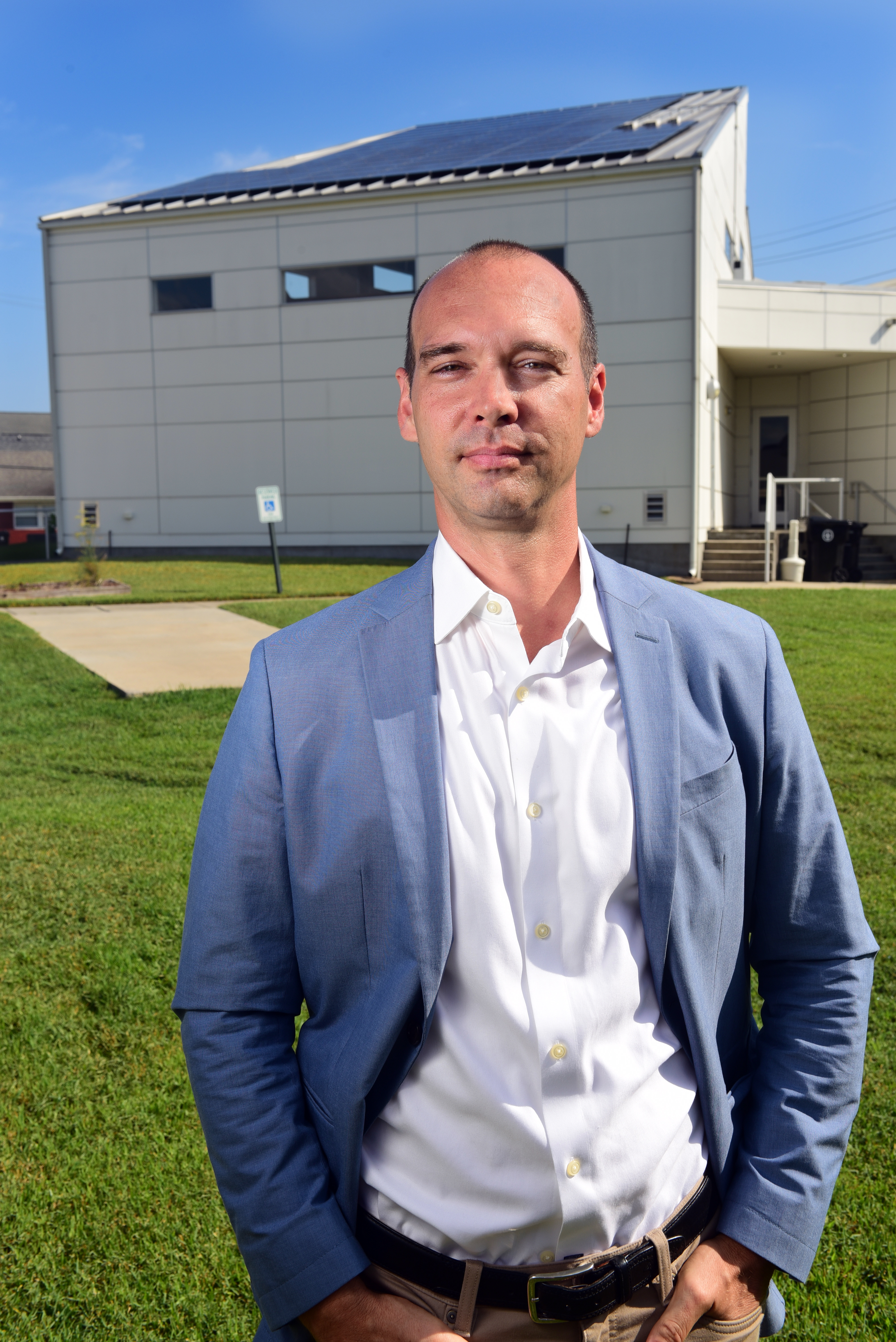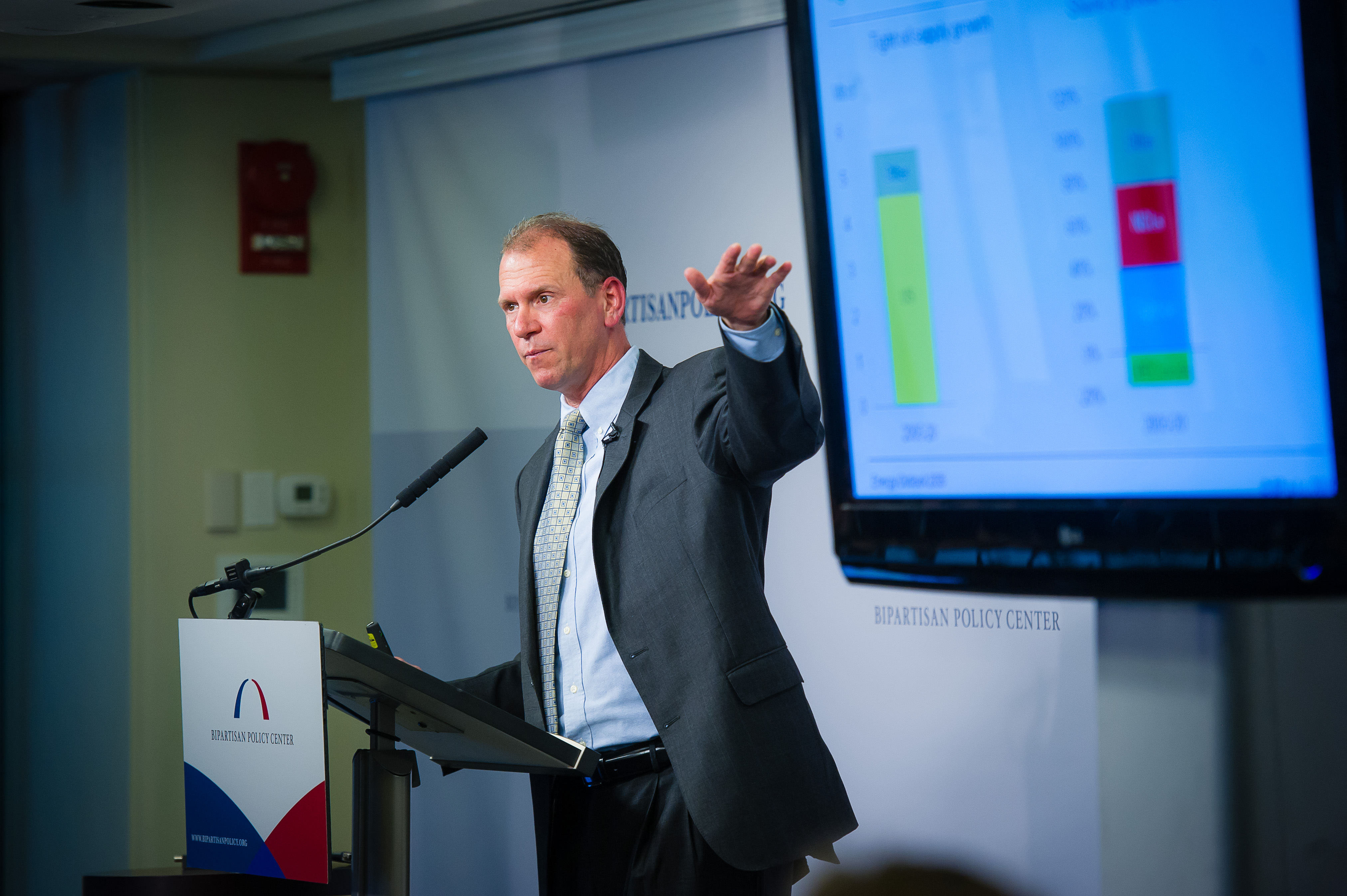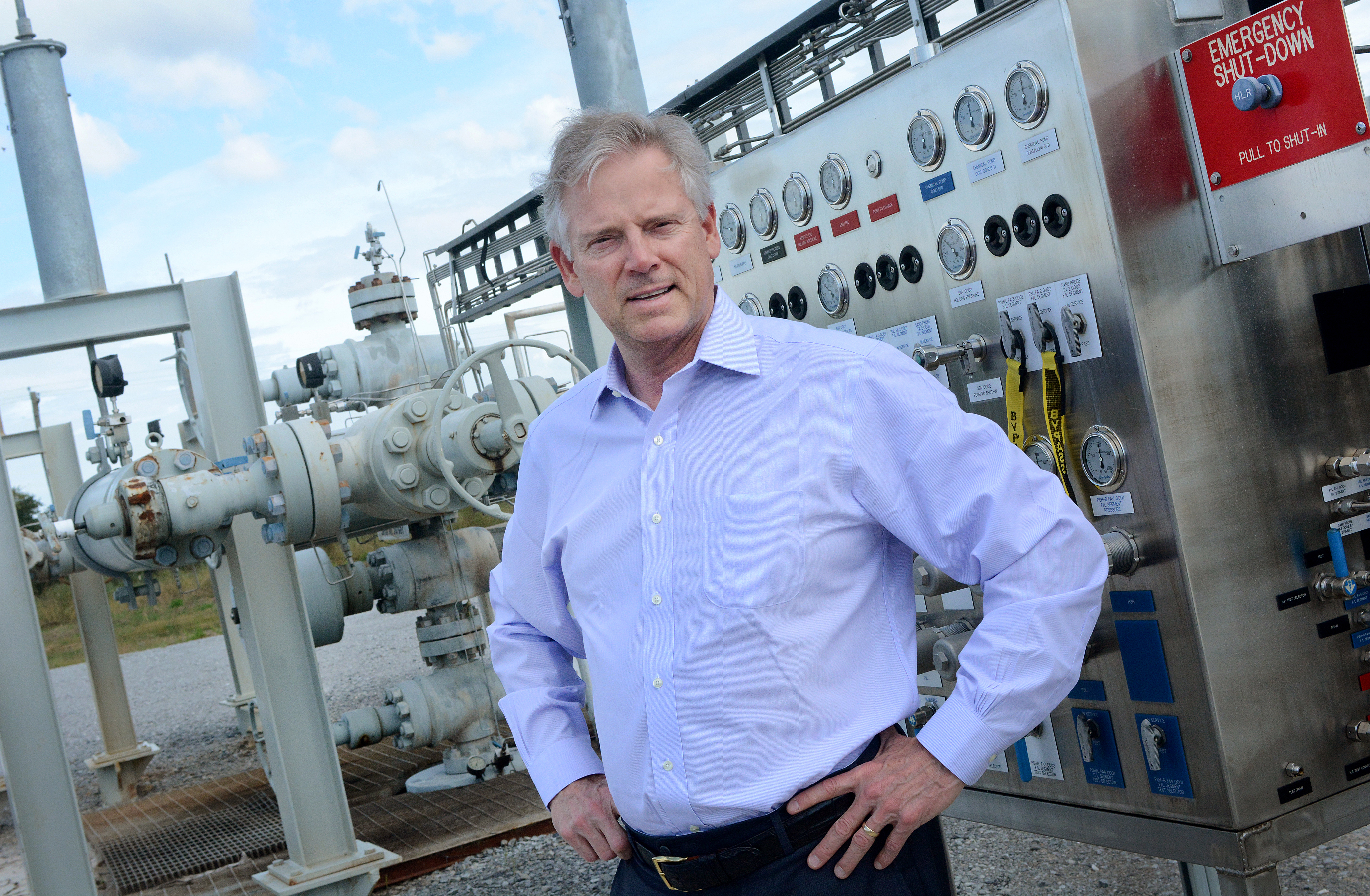Looking to the faraway, distant economic landscape of 2035 and beyond, industry leaders are beginning to accept the likelihood of flattening or declining oil demand in the extreme long term.
Already, though, they are employing various strategies to prepare.
Even as current cost factors buoy oil demand, the largest oil producers are fixated on a growing long-term preference for natural gas and renewable forms of energy.
While there is disagreement as to the role oil will play past the mid-century mark, economists say that the power and transportation markets will ultimately determine its future, as population increases and the emergence of developing countries lead to an increasing need for energy.
Key is the significantly greater role that natural gas will play in that scenario, with some estimating that demand for the product will double through 2040.
In the meantime, here’s the big, perhaps unanswerable, question: Will Louisiana remain a major energy player when the demand shifts?
Given the increased development of shale plays and the proliferation of liquefied natural gas (LNG) facilities in the last 10 years that have propelled the U.S. and Louisiana from importer to exporter, natural gas may very well secure Louisiana’s spot at the table.
Energy Institute of Louisiana Director Mark Zappi in Lafayette says predicting where the market is going to be decades into the future is nearly impossible due to unknown political, technological and economic factors, but there is one virtual certainty: Natural gas is going to be big. Natural gas has its own environmental attributes, emitting up to 60% fewer GHGs than coal for power generation, and is an ideal source of reliable power while also supplementing intermittent renewable energy sources such as solar or wind.
“I think natural gas has got a very bright future,” Zappi says. “Every new power plant is going to be natural gas or solar, with natural gas being the predominant one that you’re going to hear about over the next 20 years.”
CHANGING PORTFOLIOS

To prepare, BP Oil is weighting its global upstream portfolio in favor of natural gas, since it feels that it will be the only fossil fuel likely to grow its share in the world energy mix in the next two decades.
In the most recent January edition of BP Energy Outlook 2035, the company discusses key factors it feels will play out by 2035 and beyond.
“The rapid growth in U.S. and Australia is likely to drive big structural changes in the global natural gas markets,” says Mark Finley, BP’s general manager of Global Energy Markets, “with LNG playing the role of connecting what are currently disconnected regional marketplaces through growing trade and building more of a global gas market.”
ExxonMobil, one of the largest natural gas producers in the U.S., takes a similar view. Recent advances in production technologies have helped it unlock vast new supplies of the fuel in North America that previously were financially impractical to produce.
“We’re looking into those technologies that are scalable; that are affordable and sustainable,” says Aaron Stryk, a spokesman for ExxonMobil, “and natural gas is one of those that checks all the boxes.”
There are those who urge Louisiana to think more long-term by giving biofuels, solar and wind energy greater attention if it wants to retain its role as a major energy provider, pointing to statistics that say about 30% of automobiles will be hybrids and/or electrically powered by 2030. Power plants are relying more upon solar and wind power to meet their needs as well, although Louisiana lags behind many other states in this regard.
Large refiners such as ExxonMobil, Shell and BP are heeding the call by investing heavily in renewable energy research—although there are minimal real-world applications of the research to date—and academic institutions such as the Energy Institute of Louisiana at the University of Louisiana at Lafayette are encouraging the development of solar, wind and biofuels as alternate sources of energy.
Even so, the demand for oil will always be there, energy economists say.
“Not like it has been historically, and certainly not as much as it is today, but it’s never going away,” says David Dismukes, executive director of the LSU Center for Energy Studies. “What’s going to happen is substitutes and alternatives are going to arise that are just as cost-effective as oil and gas, but I don’t think fossil fuels are going to go away because they’re still a relatively abundant, cost-effective and widely available resource.”
Dismukes says there are other sources of demand for fossil fuels that can’t be discounted—particularly in Louisiana, as they are used as feedstock in the manufacture of chemicals and other products. “You’re always going to have a solid floor [for oil],” he adds. “Now, where that floor will be I can’t say, but there’s always going to be a floor.”
Speaking at an Oct. 4 Lafayette International Center luncheon at the Petroleum Club, David Payne, vice president of drilling and completions at Chevron, says he doesn’t think the growth in renewable energy will mean the death-knell for oil.
“You hear all the talk about peak oil and that there’s going to be a decline, and all these other things are going to change things—solar, wind and renewables. At the end of the day, everyone agrees that there will be an increase in energy demand worldwide.
“Today, there are 3 million people in India that don’t have electricity. There are a billion people globally that don’t have access to electricity. In all the scenarios, we show slow growth in oil demand. We see significant growth in [natural] gas demand, and that’s even with an increase in renewables.”
PREPARING FOR THE SHIFT

—Jeff Cantin, president, Gulf States Renewable Energy Industries Association
Over the last decade, a handful of companies—many already accustomed to taking risks—have proven their willingness to prepare for a demand shift away from fossil fuels. As one of the oil and gas “big boys,” ExxonMobil has spent approximately $8 billion since 2000 to develop and deploy lower-emission energy solutions across its operations, and is currently investing about $1 billion a year in research and development.
ExxonMobil’s in-house research portfolio includes biofuels, carbon capture and storage, energy-efficiency processes, natural gas technologies, advanced energy-saving materials and environmental life cycle assessments.
“We pride ourselves on constancy of purpose,” says Mike Kerby, ExxonMobil’s corporate strategic research manager. “We refer to it as the dual challenge. We need to have that balance of addressing the near term needs of our business as well as the longer-term needs.”
In Clinton, N.J., an ExxonMobil staff of chemists, climate scientists, microbiologists, polymer scientists, data scientists and mathematicians are charged with performing the fundamental science for the corporation, in collaboration with more than 80 universities and other research groups worldwide.
While there are some 20 to 30 legitimate transportation fuels that are considered biofuels, Kerby says there has been growing excitement about the potential of algae-based biodiesel. Algae naturally produces lipids that can be turned into a renewable, lower-emission transportation fuel.
However, in a world where shareholders are more interested in the current quarter than 20 or 30 years down the road, moving the technology from the petri dish to the fuel tank has been a difficult proposition.
“Of course, this is all driven by the ability to do this at scale and affordably, and then integrate that into our existing refineries such as Baton Rouge or Baytown,” Kerby says. “We like this [algae-based fuels] because it adheres to the principles of not competing for food and water. We also think it has the promise to scale, and that we can integrate it into our existing infrastructure.”
Other research is equally promising, such as converting cellulosic waste into biodiesel and developing carbon fuel cell technology to capture CO2 and generate power.
EIL’s Zappi says many alternative forms of energy—particularly solar—are only one technological breakthrough away from “hitting a home run.” In 2016, the University of Louisiana at Lafayette (EIL’s sponsoring institution) and Louisiana Generating LLC, a subsidiary of NRG Energy Inc., signed an agreement for the construction and operation of a $5 million solar project on the Lafayette campus.
The Photovoltaic Applied Research and Testing Laboratory is located on about 5 acres in the University Research Park. Terry Chambers, an associate professor of mechanical engineering, is leading the project.
The PART Lab will give students training in the field of alternative energy, reduce the university’s net fossil-fueled energy consumption by up to 10%, and offset air emissions such as sulfur dioxide, nitrous oxide and greenhouse gases. Zappi says the state-of-the-art PART Lab “represents how industry, university and government partnerships can be leveraged to better position Louisiana as the energy state. It will further entrench UL Lafayette as a key national player in the alternative energy development and applications arena.”
THE POWER OF SOLAR

—Mark Finley, general manager of global energy markets, BP
Elsewhere, Entergy New Orleans began generating electricity at a new solar power plant in New Orleans East in August 2016. Entergy said in a press release that the plant’s more than 4,000 solar panels can produce up to one megawatt of electricity, or enough to power roughly 160 homes.
In addition to solar panels, the pilot project incorporates new battery technology that will test ways to store power on cloudy days. The electricity is fed directly into the distribution grid to service New Orleans customers.
Jeff Cantin, president of the Gulf States Renewable Energy Industries Association, warns that Louisiana could find itself behind the eight ball if it chooses to ignore the increasing popularity and cost-effectiveness of solar energy.
“Oil and gas is always going to play a role in Louisiana, and we have to support that industry,” he says, “but at the same time we have to diversify, because we’ve already suffered the downsides of being dependent on an energy system that is global and very political.”
While developments in solar power seem to have long-term sustainability, the big question mark surrounds energy storage. Cantin says there have been some promising advances in that arena.
“You can’t have a conversation about solar today without talking about energy storage,” he says, “whether it’s utilities finding ways to store and release energy on a consistent level, or a business or residence using stored energy with renewables.”
The development of the Tesla Powerwall is perhaps the most notable recent example. The Powerwall stores excess solar energy and makes it available upon demand, primarily at a residential level. “When you scale that up to a business level, that can provide additional services such as voltage stabilization and frequency stabilization. For a utility, a big battery like the Tesla Powerwall could even provide peaking power in the middle of the day,” Cantin says.
In fact, New Orleans is currently considering options for handling the need for peaking power and other services—and battery storage is one of those options.
BULLISH ON NATURAL GAS

—Charles Goodson, president and CEO, PetroQuest Energy Inc.
Despite the likelihood of scalable and practical applications of alternative forms of energy past the mid-century mark, those without large amounts of capital to invest in R&D—namely, the small- to medium-sized players—are keeping their eyes fixed on the next 20 years, not the next 40 or 50.
For many, that means preparing for the impending natural gas boom.
Even as a global overabundance of natural gas and cheap oil is dampening current LNG export expectations, many owners remain bullish on Louisiana continuing its trajectory toward becoming a major hub by 2020. There are currently $88 billion in LNG projects planned, under construction or in operation in the state.
Jason French, chairman of the Louisiana Energy Exports Association, says satisfying long-term demand requires “a major LNG facility to be built somewhere in the world every year between now and 2035.” The optimism is fueled by significant worldwide demand, especially from U.S. allies in Europe and Asia who want a safe, stable and secure source of energy that also lessens their dependence on Russia. Also, new-build power generation continues to be led by natural gas-fired power plants and renewable energy sources.
Upstream, there’s little doubt that some groups and industries are diversifying their base in preparation for expected natural gas demand increases. For example, Port Fourchon, an offshore oil and gas hub south of Houma, hopes to diversify into the LNG market. Fourchon LNG plans to file an application with the U.S. Federal Energy Regulatory Commission to construct an $800 million LNG production and export facility there. Once constructed, Phase 1 of the project is expected to produce 2 million tons of LNG per year for export, with a program to increase capacity up to 5 million tons in Phase 2.
No matter the politics, shifts in public opinion or groundbreaking technologies that loom on the horizon, the future of oil and gas hinges, ultimately, on price points. Muddying the water somewhat for economic forecasters, the previous decade has been one of the more dynamic in history, with oil surpassing $100 a barrel for years, then plummeting to near $20 a barrel in 2015.
At oil’s high mark, there was an avalanche of interest in new second- and third-generation biofuels and natural gas. At the same time, federal and state governments were accelerating the use of alternative biofuels through policy, with the hope that prices would decline.
“You saw both the private sector and the feds moving toward these bio-based transportation fluids. Of course, at the time they were banking on oil being at least $80 a barrel,” says EIL’s Zappi. “Then came 2014 and the bottom dropped out. Then we were looking at $28 and $30 oil. There’s not a single biofuel that can compete with petroleum-based gasoline and diesel fuel in that scenario. As such, if you look at U.S. and global investment in transportation fuels, you’re seeing a pretty dramatic drop-off.”
For the long term, economists say those dynamics will most certainly change and overall demand will continue to shift more toward renewable forms of energy. As a consequence, costs will continue to fall for biofuels and make those price points more attractive, in large part due to federal and private sector research that will either reduce the cost of making or retrieving the energy.
“That’s why the major energy companies such as Exxon, BP, Shell and Chevron have astutely re-named themselves as energy companies,” Zappi says. “BP wants to sell you transportation fuels—they don’t care if it came from corn, algae or crude. They want to be in the driver’s seat and one of the leading providers of transportation fuels.”
Still, making economic assumptions beyond the mid-century mark is a little like swinging at a piñata. “If you asked me what our primary transportation fuel will be in 100 years, there’s no way I could answer that, or anybody else could for that matter. What cars will we be driving in the next 50 years? How much is fracking technology going to improve? What’s the price of oil going to be? What will the social and technological climate look like?
“Just look at how we’ve already defied expectations. Today, we’re tapping into natural gas and oil sources that 30 years ago we would have never imagined possible.”
This article was originally published in the fourth quarter 2017 edition of 10/12 Industry Report.








